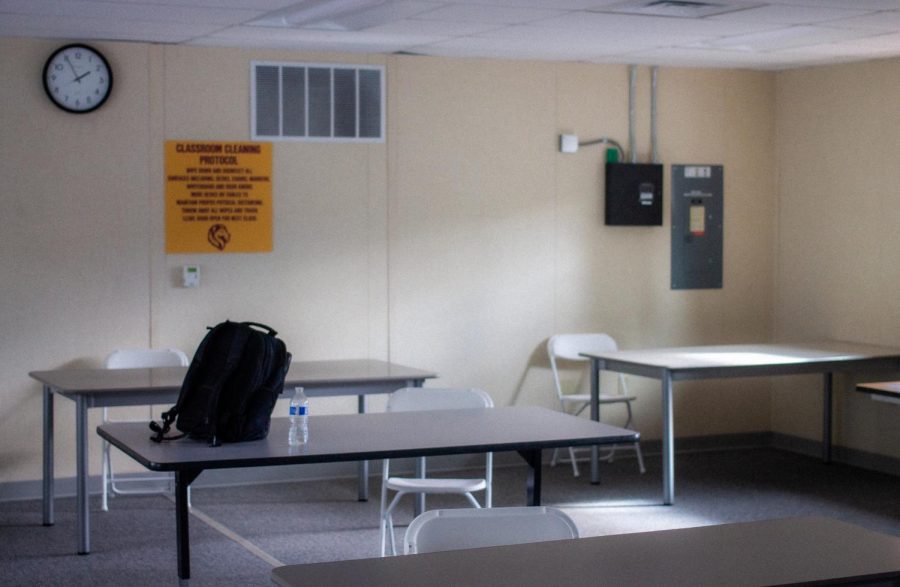Portables’ Future Remains in Flux
Past Allen-Gates, the serenity is suddenly interrupted by a collection of blatant white blocks, heavy in the middle of the softball field.
As the eye moves across Lakeside’s Upper School campus, it is hard to suppress a sigh at the sheer beauty of it all: the red brick facades of Bliss, Moore, and Pigott Library; the spotless windows of the Allen Athletic Center; the towering steeple of McKay, scraping against the sky; and the verdant green of the quad. Yet past Allen-Gates, the serenity is suddenly interrupted by a collection of blatant white blocks, heavy in the middle of the softball field, abandoned like the ruins of some ancient, very uniform city. These are the portables, used in last year’s return to school for their ventilation systems (an amenity many buildings at Lakeside lack), yet now deserted. However, as Lakeside begins its indeterminate “return to normal,” what is the future of the portables? And do their possible benefits truly outweigh their financial and spatial costs?
Entering March of 2021, the school had been unsure about how they would adhere to the stricter COVID-19 regulations still in place then, and the portables had been viewed as good means for providing social distancing and proper ventilation. However, with the prevalence of the vaccine, COVID-19 policies shifted, and the portables seem to have become obsolete. Considering purposes for the portables, Chief Financial Officer Birage Tandon says that they are still useful for distanced eating on rainy/snowy days and if the pandemic worsens. Nonetheless, “[Lakeside is] paying a lot for the portables!” Exclaims Ms. Tandon. But she goes on to defend the high cost, positing that “even more expensive are the set-up and removal times” as well as the “amount of time it takes to get permits, delivery, and logistics.” Simply stated, Ms. Tandon feels that the potential benefits outweigh the rental costs.
By contrast, students have mixed feelings about the portables. Out of 51 Tatler Poll responses, 16 (~30%) say, “Get rid of them.” On the other hand, 21 (~40%) respondents considered the value of keeping the portables: one noted that winter was right around the corner; eight thought they could be used as lunch spots or club spaces. Still, many also disapprove of continuing to have class in them and hope the classes currently held there will return to their regular buildings. The remaining 14 (~28%) assumed a bit of a different approach to the question, recommending they be used as “a jail for annoying freshmen” or “made into a haunted house.” However, their replies quickly changed once respondents were informed of Ms. Tandon’s answers, especially the ones regarding price. Of the 11 lowerclassmen informed, eight stated they would like to see the portables gone while one defended their ongoing presence, citing their possible use as club spaces (the remaining two were indifferent on the matter). All interviewees agreed there are more cost-efficient solutions to the problems the portables aim to fix.
In summation, while much of the student body contends they should be removed, the portables stay for the potential value they could have if the pandemic becomes more severe. At present, the most the student body can do is enjoy the few amenities they do provide (such as reliable heat during the frigid winter) and keep in mind that, true to their name, the portables are, indeed, portable. One day, when the pandemic draws to its conclusion, they may be transported off Lakeside, restoring that field – and the wider campus – back to its formerly pristine and brick-filled state.
Conceitedly, his favorite month is December
As his birthday falls in December 2006
And even more, his favorite holiday is that of December 25
As...

